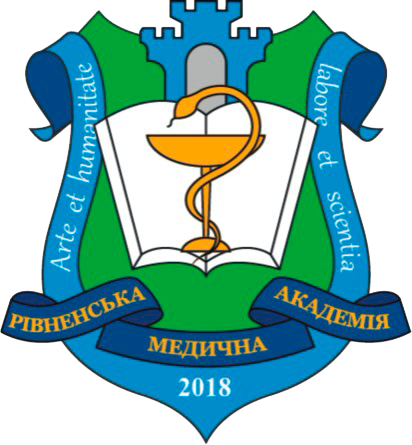BACTERIAL VAGINOSIS: DIAGNOSTIC ASPECTS AND EXPERIENCE OF COMPLEX TREATMENT IN WOMEN OF REPRODUCTIVE AGE
DOI:
https://doi.org/10.32782/health-2024.2.7Keywords:
bacterial vaginosis, diagnostics, dequalinium chloride, oral probiotic, topical probiotic.Abstract
A clinical and laboratory examination and complex treatment of 70 women of reproductive age (average 26.8 ± 0.5 years) with a verified diagnosis of bacterial vaginosis was carried out. Therapy was carried out in two stages. At the first stage, as a basic therapy with the aim of eliminating opportunistic microorganisms not characteristic of this ecotype, an antiseptic agent of dequalinium chloride was used in the form of vaginal tablets of 10 mg of dequalinium chloride for 6 days. Depending on the further method of treatment, the treated patients were randomized into two clinical groups comparable in age, nature of menstrual function, sexual activity, complaints, clinical symptoms and laboratory data. For the quantitative recovery of the own lactobacillary flora of the vagina, 35 women of the main group were given the oral probiotic, containing a combination of L. rhamnosus GR-1 and L. reuteri RC-14 strains at a dose of 109 CFU/ml. The drug was prescribed 2 capsules per day during meals for 14 days. The comparison group included 35 patients whose vaginal microbiota correction therapy was carried out with vaginal suppositories, which include at least 5*107 Lactobacillus acidophilus and Bifidobacterium, lactose, ascorbic and folic acids, which were used twice per day for 10 days. The results of the study (a significant reduction in subjective sensations, clinical symptoms, a significant reduction in the titer of opportunistic pathogens) testify to the high laboratory and clinical effectiveness of dequalinium chloride as one of the components in the scheme of combined therapy of bacterial vaginosis, which has high antimicrobial activity in relation to microorganisms that cause bacterial vaginosis in women and, according to the literature, affects the biofilms of Gardnerella spp. The use of an oral probiotic containing a combination of L. rhamnosus GR-1 and L. reuteri RC-14 strains at a dose of 109 CFU/ml makes it possible to better restore the Doderlein microflora, which was preserved for the next six months, and the pH of the vaginal contents in comparison with a local remedy, which includes 5 x 107 Lactobacillus acidophilus and Bifidobacterium, and can be recommended as the drug of choice in the second stage of treatment of bacterial vaginosis in women of reproductive age, in particular with a recurrent course of the disease. The treatment of a pathogenetically justified diagnosis of “bacterial vaginosis” in women of childbearing age should be complex, two-stage and safe, taking into account the individual characteristics of the patient and allow achieving a sustainable therapeutic effect. The amount of therapy is determined by the degree of severity, duration of the disease, severity of complaints.
References
Bradshaw C.S., Sobel J.D. Current Treatment of Bacterial Vaginosis –Limitations and Need for Innovation. The Journal of Infectious Diseases. 2016. № 214 (1). P. 14–20. https://doi.org/10.1093/infdis/jiw159.
Cartwright C.P., Pherson A.J., Harris A.B., Clancey M.S., Nye M.B. Multicenter study establishing the clinical validity of a nucleic-acid amplification-based assay for the diagnosis of bacterial vaginosis. Diagn Microbiol Infect Dis. 2018. № 92 (3). P. 173–178. https://doi.org/10.1016/j.diagmicrobio.2018.05.022.
Coleman J.S., Gaydos C.A. Molecular Diagnosis of Bacterial Vaginosis: an Update. J Clin Microbiol. 2018. № 56 (9). Р. 1–9. pii: e00342-18. https://doi.org/10.1128/JCM.00342-18.
Donders G.G.G., Bellen G., Grinceviciene S., Ruban K., Vieira-Baptista P. Aerobic vaginitis: no longer a stranger. Res Microbiol. 2017. № 168 (9–10). Р. 845–858. https://doi.org/13410.1016/j.resmic.2017.04.004.
Herbst-Kralovetz M.M., Pyles R.B., Ratner A.J., Sycuro L.K., Mitchel С. New Systems for Studying Intercellular Interactions in Bacterial Vaginosis. J Infect Dis. 2016. № 214 (1). Р. 6–13. https://doi.org/10.1093/infdis/jiw130.
Muzny C.A., Laniewski P., Schwebke J.R., Herbst-Kralovetz M.M. Host-vaginal microbiota interactions in the pathogenesis of bacterial vaginosis. Curr Opin Infect Dis. 2020. № 33 (1). Р. 59–65. https://doi.org/10.1097/QCO.0000000000000620.
Muzny C.A., Taylor C.M., Swords W.E., Tamhane А., Chattopadhyay D., Cerca N., Schwebke J.R. An Updated Conceptual Model on the Pathogenesis of Bacterial Vaginosis. J Infect Dis. 2019. № 220 (9). Р. 1399–1405. https://doi.org/10.1093/infdis/jiz342.
Noor Z., Noor M., Khan I., Khan S.A. Evaluating the lucrative role of probiotics in the aquaculture using microscopic and biochemical techniques. Microscopy Research and Technique. 2020. № 83. Р. 310–317. https://doi.org/10.1002/jemt.23416.
Thulkar J., Kriplani A., Agarwal N. A comparative study of oral single dose of metronidazole, tinidazole, secnidazole and ornidazole in bacterial vaginosis. Indian J. Pharmacol. 2012. № 44 (2). Р. 243–245. https://doi.org/10.4103/0253-7613.93859.
Xiao B., Niu X., Han N., Wang B., Du P., Na R. et al. Predictive value of the composition of the vaginal microbiota in bacterial vaginosis, a dynamic study to identify recurrence-related flora. Scientific Reports. 2016. № 6. Р. 1–8. https://doi.org/ 10.1038/srep26674.





